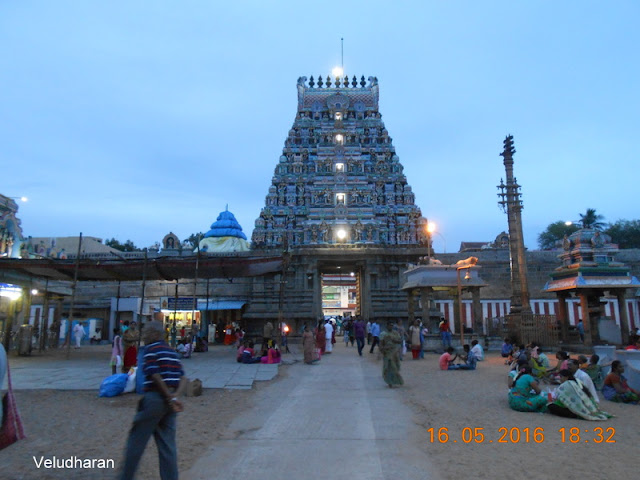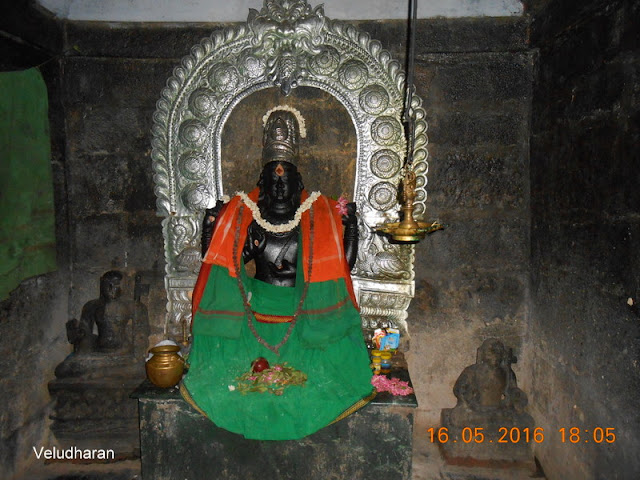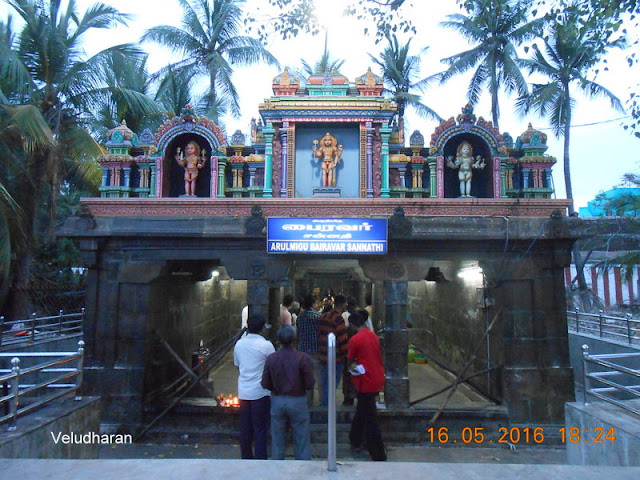17th May 2016
A temple walk around Thiruvottiyur Thyagaraja swamy temple (
Popularly known as Sri Vadivudai Amman Temple ) was planned at 3.45 PM on 16th
May, 2016 (since the temple reopens at 4pm). It will include discussions on
Thyagaraja cult, Nayanmars and Thiruvotriyur and similarities between
Thiruvarur and Thiruvottiyur based on the Thyagaraja cult.
Even-though I had been to this temple number of time,
this visit is on a different perspective. The walk was lead by Mr
Madhusudhanan, an architect by profession and passion on temple architecture.
He had done a wonderful presentation of the temple and explained all the
details from the place where changes were made. I really wonder how he could
collect the details in the midst of his professional work. It will be
difficult for me to recollect many things which told during the
discussion.
Thyagaraja cult is a set of characteristic features, norms to
be followed, similarities in which the way it was practiced. Most of the
Vidanga sthalangal in and around Thiruvarur practiced the similar cult. There
are some shiva temples on the coromandel coast, which has Thyagaraja Sannadhi,
but Vidanga moortham is (of rare gem,) missing. Somaskanda is generally
called as Thyagaraja, Thyagaraja and the secret ( covering Kanda in the middle
by the flowers, some times without Kanda ) is of family tradition type of
moorthams and they are Somaskandar where Murugan will be in the middle and
Ganesha anugraha moorthy in which Ganesha is seating on the right side of Lord
Shiva. Both of the sudhai/stucco moorthams are available in the 2nd level
of east side Rajagopuram. The original Vindangar was worshiped by Sri
Mahavishnu keeping it on his chest. The vidanga moortham was transferred to
Chozha King Musukundha chakravarthy through Indran. ( Which has a
separate story).Similarly the natanam is also different in each temples.
1
|
Thiruvarur
|
Vidhividangar
|
Ajaba natanam
|
Depends on the
chest movement due to breathing ( Maha
Vishnu)
|
2
|
Nagaikaronam
|
Sundara
vidangar
|
Vici natanam
|
Dancing like
sea wave
|
3
|
Thirukolili
|
Avani vidangar
|
Drunganatanam
|
Dancing like a
bee that hovers on the flowers
|
4
|
Thirunallaru
|
Nagara vidangar
|
Unmatha natanam
|
Dancing like an
intoxicated person
|
5
|
Thirukkaarayil
|
Adhividangar
|
Kukkuta natanam
|
Dancing like a
cock
|
6
|
Thiruvaimur
|
Nallavidangar
|
Kamalanatanam
|
Dancing like
lotus moves due to breeze
|
7
|
Thirumaraikadu
|
Buvanividangar
|
Hamsapadanatanam
|
Dancing with
the gait of swan
|
The
Thiruvottiyur temples has the contributions of Chozha, Pallavas, Nayaks
etc. The Thyagaraja sannidhi at Thiruvotriyur was built adjacent to main Chozha
period temple with out much damage to the kodungai. The mandapam was
built in stages may be by different king’s period. The Thiagarajar sannadhi
pillars are of round with lot of inscriptions and front mandapam are of
square in shape with reliefs on all the sides. The reliefs are signifies
the different forms/ school of worshiping like thanthirka, Kabalika, etc.
A
new comer to this temple will be confused very much by seeing the layout of the
temple. Sannadhis are built in a haphazard manner and moorthams were located in
different positions. The Dwarapalakas are beautiful and miniature of
Shiva’s dance, Gajasamkaramurti are chiselled on the cap are worth to
see. The Dwarapalakas might be originally in the inner prakaram and latter
shifted to the present place which obstructs the view of
inscriptions. The mandapa pillars has the reliefs of Nayanmar’s
siddhu, ( Sundarar – at avinashi, child came out of croc’s mouth and
Thirugnanasambandar – poompavai comes alive from ashes). Also the sacrificing
reliefs with a head and two ladies holding trishul.
There
is a Chandeswarar idol kept in the mandapa, which is not it’s original
place. In the nayanmars place a boothagana’s moortham is named as Nambiyandar
nimbi. Then comes the vattaparai Amman Sannadi. This might be of Kannaki
worship, to prove this during function the pandal erected outside will
not be removed, instead burnt out. Also there is a possibility that Vattaparai
amman might be a Village god with ant hill near by ( Moolavar Lord Shiva is in
the form of Ant hill ) and the construction of the Vattaparai Amman
sannidhi, which has no space with main sanctum. There is a Dwajasthambam
installed in front of Vattaparai amman sannadhi with it’s base in round shape,
This might be a soolam once.
After
that we had visited the Thiruvoteesar Temple, which has the main contribution
of Nattukottai Nagarathars. Chandikeswarar, Bhairavar reliefs are in actual
place on the pillars. The medallions are just modern as flowers and
Subramanya standing on Lotus. Then comes the Bhairavar Sannidhi
whose hair touches the ground and the dog is missing.
In
The Vadivudai Amman sannadhi we had seen a moortham of Chamundi with skull on
it’s head. There must a saptamatrikas sannadhi previously. This is the
one escaped from ..... and installed here. It was interesting to note that Sri
Sankarar worshiped Sri Vadivudai Amman. To prove this still pooja is being conducted
by the malayalis.

Thiagarajar sannadhi built with main sannadhi
without damaging the kodungai
Thanthirika worship
Kabalika
worship ( holding spinal cord bone )
Thabas standing on one leg
Sundarar and
the child comes out of crocodile’s mouth
Thirugnanasambandar and Poompavai
Sacrifice
Homa
mandapam where moorthams on the top
Chandikeswarar
in the front mandapam
A
miniature shiva’s dance on the cap of Dwarapala
A
miniature shiva’s dance on the cap of Dwarapalaka
A
1963 beautiful painting of Kaliya nayanar
tried to cut himself to get blood to burn light in the sanctum, where
Lord Shiva appeared and blessed him
The
round pillar with inscriptions of Rajaraja-I’s meikeerthi – back of sanctum
Sri Kowleeswarar back of Sri Thiagarajar
Sannadhi
Dwajasthambam with circular base in front of
Vattaparai amman Sannadhi
Subramaniyar
on Lotus
Bairavar sannidhi
Chamundi – in Vadivudai amman temple

























